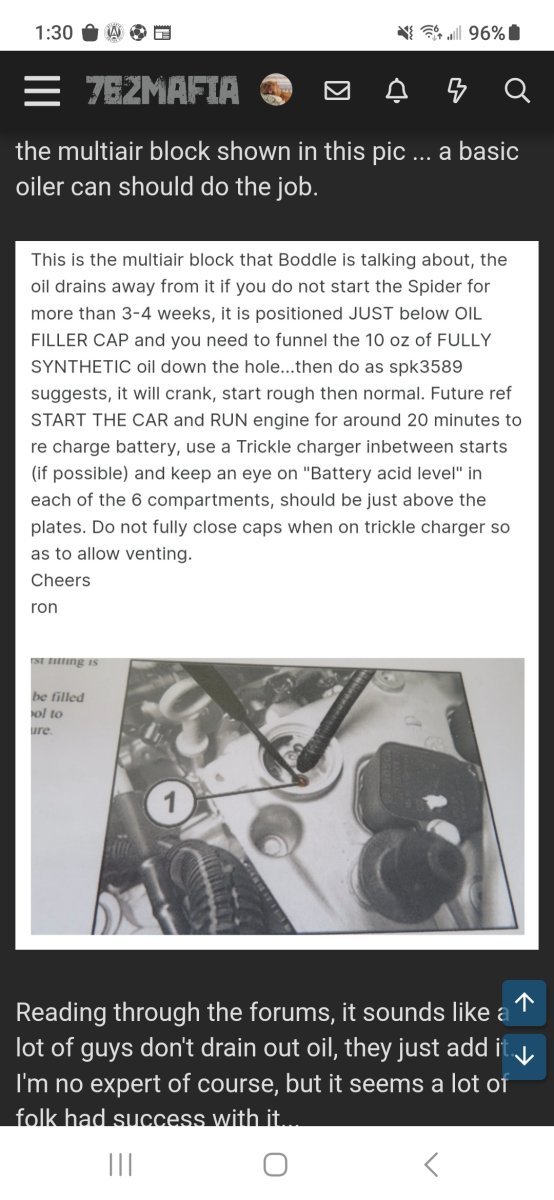theres a shop down in newnan, kind of a long drive from you, but they did my Ram in 2017. dont recall the name but its the line x shop off of greenville. 6" rough country suspension lift with 4 toyo M/T 37x17x13.5- think it was about 2700
Navigation
Install the app
How to install the app on iOS
Follow along with the video below to see how to install our site as a web app on your home screen.
Note: This feature may not be available in some browsers.
More options
-
ODT Gun Show & Swap Meet - May 4, 2024! - Click here for info
You are using an out of date browser. It may not display this or other websites correctly.
You should upgrade or use an alternative browser.
You should upgrade or use an alternative browser.
Lifting a '15 Tundra
- Thread starter drewga11
- Start date
On behalf of all drivers in front of you.
Aim the headlights back down after you lift your truck.
It’s the one thing people that lift their trucks fail to do and the rest of the driving public has to wear sunglasses at night because of it.
Aim the headlights back down after you lift your truck.
It’s the one thing people that lift their trucks fail to do and the rest of the driving public has to wear sunglasses at night because of it.
Can't please everyone and nobody is perfect lol. I would steer clear of 18s tho. Not alot of options as far as wheel/tires, and the barrel of the wheel makes it tough to clear Tundra brakes
I'll probably end up with 20s, but I dont see how 18s would be an issue on the truck when the stock wheels are 18s.
The 'barrel' or 'drum' of the wheel(not the 'rim' or 'lip' of the wheel) is usually smaller in diameter than a factory wheel, causing clearance issues with the calipers. Especially if doing a dual plane balance or 'dynamic balance' where as there are weights on the inner diameter of the wheel behind the 'face' or 'spokes'. Also, some aftermarket wheel manufacturers such as Fuel, have wheels with not 1 but 2 valve stem holes. One being very close to the inner bead of the tire to ade in the reading of the 'tpms'. Smaller diameter wheels move said inner valve stem closer to axle centerline which is where, Yep! You guessed it! the outer tie rod is located. Being that the valve stems on a Tundra with tpms are metal, it offers zero flex when contacting other metals. Such as an outer tie rod end during turning or any type of situations causing suspension flex. But, bigger diameter wheels help and proper backspacing makes a difference as well. And almost forgot, depending on the lift kit you have chosen, the lift manufacturer gives specifics on wheel/tire combos to help avoid any issues. Just food for thought. Do your research. Hollar if I can help
The 'barrel' or 'drum' of the wheel(not the 'rim' or 'lip' of the wheel) is usually smaller in diameter than a factory wheel, causing clearance issues with the calipers. Especially if doing a dual plane balance or 'dynamic balance' where as there are weights on the inner diameter of the wheel behind the 'face' or 'spokes'. Also, some aftermarket wheel manufacturers such as Fuel, have wheels with not 1 but 2 valve stem holes. One being very close to the inner bead of the tire to ade in the reading of the 'tpms'. Smaller diameter wheels move said inner valve stem closer to axle centerline which is where, Yep! You guessed it! the outer tie rod is located. Being that the valve stems on a Tundra with tpms are metal, it offers zero flex when contacting other metals. Such as an outer tie rod end during turning or any type of situations causing suspension flex. But, bigger diameter wheels help and proper backspacing makes a difference as well. And almost forgot, depending on the lift kit you have chosen, the lift manufacturer gives specifics on wheel/tire combos to help avoid any issues. Just food for thought. Do your research. Hollar if I can help
Good info. I appreciate it. I'm going to stick with 20s. Pretty sure my truck doesnt have tpms. Not sure if it wasnt offered in 2015 or just wasnt available on the SR5 trim level.
I think I've figured out exact wheel/tire combo I want now. Did a lot of reading on Tundra forums and found some good info there too.
Similar threads
- Replies
- 41
- Views
- 918
- Replies
- 0
- Views
- 45






